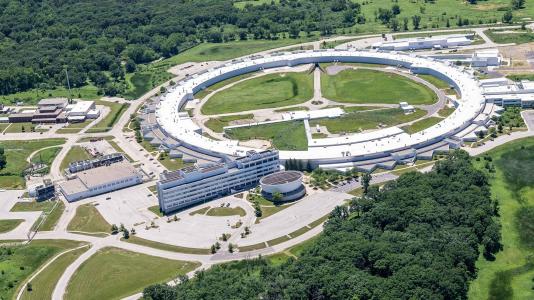The Chemistry Department strongly encourages interdisciplinary research.
The following institutes enable students and faculty to interact with their counterparts in physics, biological sciences, geophysical sciences, astronomy, and mathematics.

Argonne National Laboratory (ANL)
ANL was born out of the University of Chicago's work on the Manhatten Project in the 1940s and today ANL is one of the United States Department of Energy's largest research centers. Several Chemistry faculty are actively involved as members of The Consortium for Advanced Radiation Sources (CARS), which comprises 3 sectors of x-ray beamlines at the Advanced Photon Source (APS) of ANL.

Ben May Department for Cancer Research
Formally established in 1951, the Ben May Department for Cancer Research has advanced cancer treatment by researching fundamental biological questions and discovering applications for groundbreaking scientific discoveries.

Enrico Fermi Institute (EFI)
The EFI was founded after World War II and has played a central role in the development of basic research in nuclear physics and nuclear chemistry, elementary particle physics, and astrophysics. The Enrico Fermi Institute is a Physical Sciences unit of the University devoted to interdisciplinary research. All faculty members in the Institute hold joint appointments in one or more of the following departments: Physics, Astronomy and Astrophysics, Chemistry, Geophysical Sciences, and Mathematics.
Howard Hughes Medical Institute
The Howard Hughes Medical Institute promotes human knowledge within the field of basic sciences, especially medical research and medical education, and develops effective applications for the benefit of humanity. A scientific and philanthropic organization, its laboratories are located in academic medical centers, universities, and other research institutions throughout the United States. Investigators at the University of Chicago focus on five areas: cell biology and regulation, genetics, immunology, neuroscience, and structural biology.
James Franck Institute (JFI)
The JFI is an association of scientists with primary interests in the study of physical chemistry and condensed matter physics. It was established after World War II as the Institute for the Study of Metals, with the present name being adopted in 1967 to reflect a broader emphasis on the chemistry and physics of materials: solids, liquids, and gases.
Materials Research Science and Engineering Center (MRSEC)
The NSF Materials Research Center at the University of Chicago is an institute comprised of researchers interested in projects at the forefront of materials science. The MRSEC's shared resources allow for opportunities in collaboration and discovery that are not always possible for individual research groups.
The Institute for Biophysical Dynamics (IBD)
The IBD unites scientists from the Biological and Physical Sciences Divisions who participate in cross-disciplinary collaborative research involving molecular to cellular to mesoscopic size scales, complexity and dynamics.
The Pritzker School of Molecular Engineering (PME)
Established in 2010, the Pritzker School of Molecular Engineering (PME) is the largest academic program begun at the university since the founding of Harris School of Public Policy in 1988. With renowned scientists from around the world, the Institute conducts research at the intersection of chemical, electrical, mechanical, and biological engineering as well as materials, biological, and physical sciences. The institute's work exploring cutting-edge technologies in nanoscale manipulation and design at a molecular scale aims for socially conscious innovation in such areas as environmental sustainability, health care, and information technology.